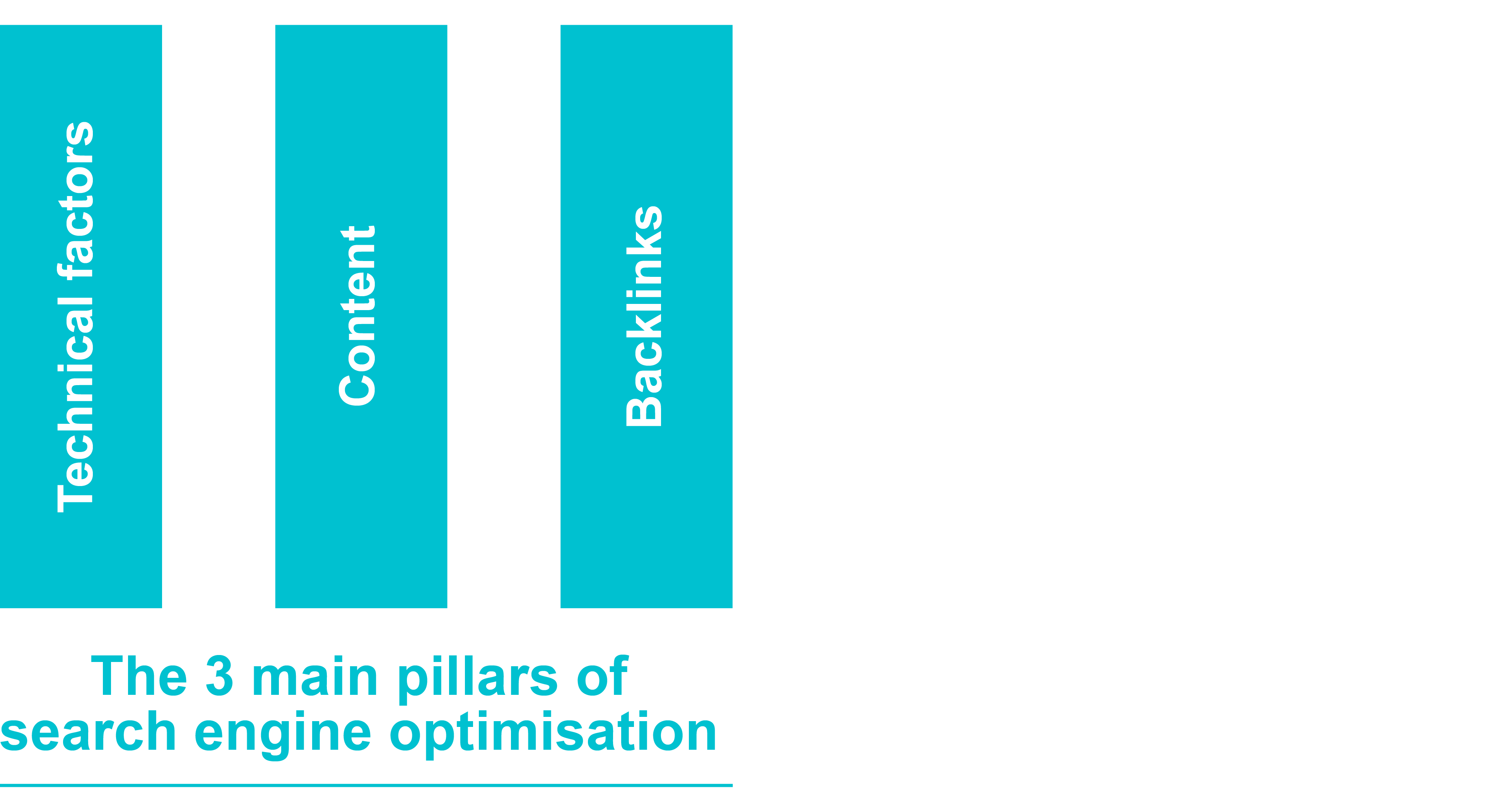Holistic digital marketing is not conceivable without considering search engines. In 2017 around 35% of web traffic worldwide was directed to websites by search results from Google and the like. This source of visitors makes up the largest share, after search engines were temporarily displaced from the top by social networks.
Search engine marketing
Search engine marketing consists of SEO (search engine optimisation) and SEA (search engine advertising). In search engine optimisation, we work according to a 3-pillar principle: accordingly, the three areas of technology, content and backlinks play major roles.

Technical factors
With regard to the technical factors, the aim is to identify and remove obstacles. This can mean that important pages of a website are not indexed on Google, which results in it not being possible to be found by users with relevant search queries. Or in other cases, duplicated content exists, which leads to a loss in organic visibility because one competes with oneself.
Content
In the area of content, the focus is on on-page content optimisation. A solid keyword research should be developed as a basis in any event. In contrast to the keyword stuffing of the past, it is nowadays crucial to create relevant and well-illustrated content for users. Google is getting better at recognising quality and measuring the success that content achieves with users. For example, it is crucial how often users click on a search result when it is displayed, or how often users jump right back when they land on the landing page. Google rewards websites where users actually find what they are looking for.
Backlinks
There is no getting around the topic of backlinks: the number of links referring to a website has always been a central success factor and updates to search engine algorithms have not changed this. However, it should be noted that the quality of the backlinks is increasingly important. If spam domains link to your website, this can even be harmful in certain cases. Conversely, backlinks from large websites with a high domain authority carry more weight. A promising approach must therefore aim to offer value added in terms of content.
Google Ads
However, the strongest impact can be achieved by combining SEO and SEA. The keyword research on which the content alignment is based also serves as the basis for Google Ads campaigns (formerly AdWords). This allows a very targeted and effective increase in search engine traffic. The typical payment model of Google Ads - cost-per-click - means that only actual clicks are paid for. With a good campaign structure, the advertiser can pick up the search queries that are important to him with suitable ads and place them on the landing page.
Analytics
All data, both from organic search queries and from users who have landed on the website via Google Ads, should be collected and evaluated neatly. This is the only way to realise a continuous optimisation process. The strategy of data-driven marketing determines which KPIs (key performance indicators) are measured, but also the focus of the corresponding landing pages. After all, digital measures and online presences are never set in stone, but are regularly optimised and adapted. This allows developing an ecosystem in which marketing, analysis and design are linked in a constructive way.
